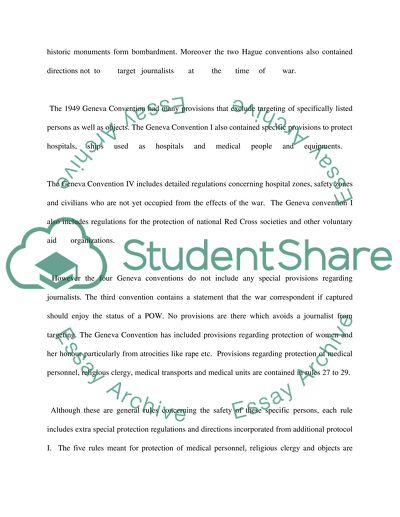Cite this document
(Humanitarian Law Specific Protections Essay Example | Topics and Well Written Essays - 2000 words, n.d.)
Humanitarian Law Specific Protections Essay Example | Topics and Well Written Essays - 2000 words. https://studentshare.org/law/1553914-critically-discuss-the-specific-protections-afforded-to-medical-personnel-clergymen-and-journalists-under-international-humanitarian-law
Humanitarian Law Specific Protections Essay Example | Topics and Well Written Essays - 2000 words. https://studentshare.org/law/1553914-critically-discuss-the-specific-protections-afforded-to-medical-personnel-clergymen-and-journalists-under-international-humanitarian-law
(Humanitarian Law Specific Protections Essay Example | Topics and Well Written Essays - 2000 Words)
Humanitarian Law Specific Protections Essay Example | Topics and Well Written Essays - 2000 Words. https://studentshare.org/law/1553914-critically-discuss-the-specific-protections-afforded-to-medical-personnel-clergymen-and-journalists-under-international-humanitarian-law.
Humanitarian Law Specific Protections Essay Example | Topics and Well Written Essays - 2000 Words. https://studentshare.org/law/1553914-critically-discuss-the-specific-protections-afforded-to-medical-personnel-clergymen-and-journalists-under-international-humanitarian-law.
“Humanitarian Law Specific Protections Essay Example | Topics and Well Written Essays - 2000 Words”. https://studentshare.org/law/1553914-critically-discuss-the-specific-protections-afforded-to-medical-personnel-clergymen-and-journalists-under-international-humanitarian-law.


